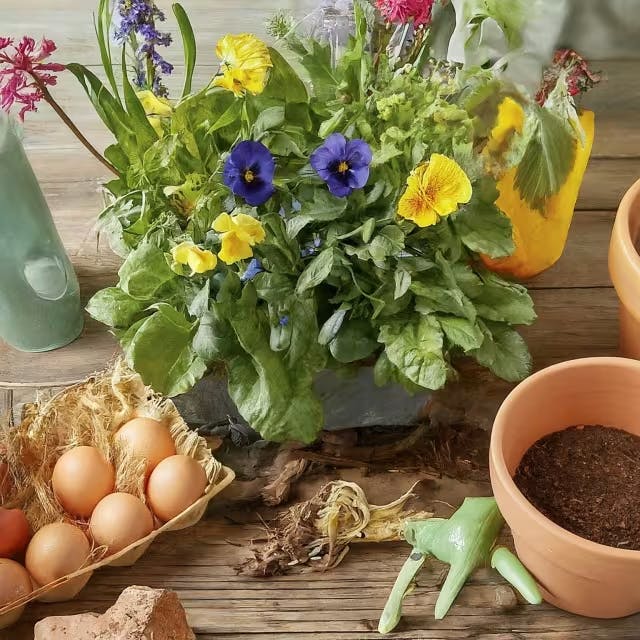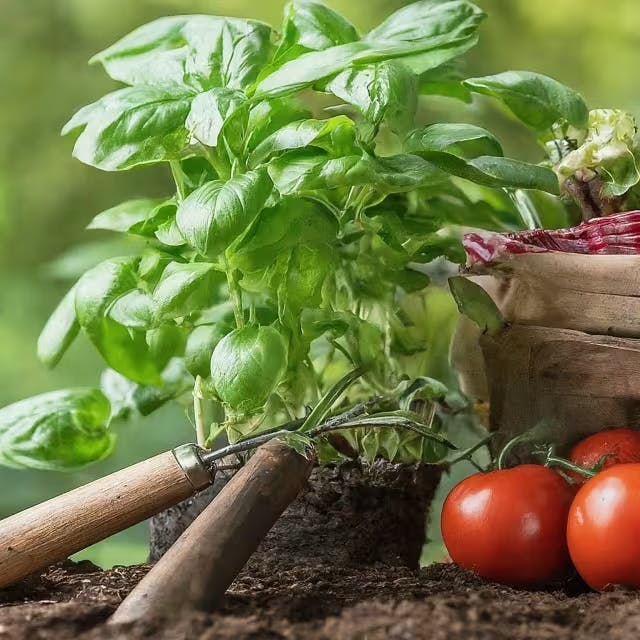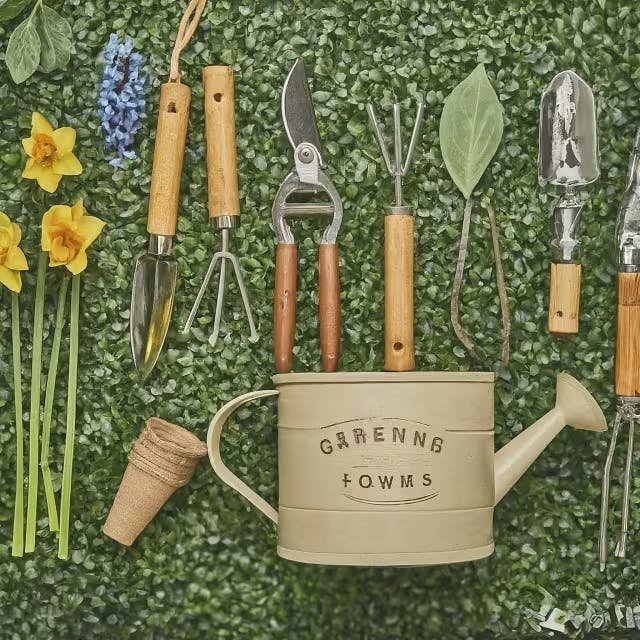Spring Sowing Essentials for a Lush Garden
Go4Turf
March 08, 2024

Embarking on the journey toward a lush garden this spring begins with understanding the foundational steps critical for success. Whether you're a newcomer to the gardening scene or looking to refine your skills, the sheer anticipation of starting a vegetable garden can be both exhilarating and a bit overwhelming. By focusing on spring sowing essentials, such as selecting the right seeds, preparing your soil for optimal growth, and gearing up with the necessary gardening tools, you're setting the stage for a thriving garden that brings joy and bounty. With practical advice on choosing a prime location, ensuring your garden has ample sunlight and a nearby water source, and tips on managing your space for the best results, this guide promises to equip you with the knowledge needed for a fruitful spring gardening season.
Key Takeaways
Select seeds that are well-suited for your garden's climate and soil type to ensure the best chances of growth.
Prepare your soil with the right nutrients and proper aeration to create an ideal environment for seed germination and plant growth.
Invest in essential gardening tools like trowels, spades, gardening gloves, and watering cans to facilitate efficient spring sowing.
Understand your local planting zones and the optimal timing for sowing seeds to maximize your garden's yield.
Choose a garden location that receives adequate sunlight and has easy access to water to support plant health and productivity.
Employ space management techniques in your garden layout to enhance plant growth and minimize pests and diseases.

Choosing the Right Seeds for Your Spring Garden
Creating a lush spring garden starts with selecting the ideal seeds. Considering factors like climate adaptability, growth duration, and plant requirements ensures a vibrant garden. Local extension services or trusted nurseries offer advice tailored to your area, enhancing success rates.
For those embarking on this rewarding journey, understanding the nuances of seed variety and potential yields can make all the difference. Explore resources like Indoor Seed Starting Made Simple: A Beginner's Guide for insights on choosing and nurturing seeds indoors before transplanting, maximizing growth potential.
Additionally, integrating sustainable practices, such as those detailed in DIY Seed Starting and Potting Mix for Gardeners, enriches your soil and seedlings with organic nutrients, contributing to a more eco-friendly garden.
Lastly, consider the joy and anticipation that comes with selecting and growing seeds, an experience akin to the optimism found in The Joy of Receiving Seed Packages: A Gardener's Delight. It's about more than just gardening; it's a journey of growth, patience, and discovery.

Preparing Your Soil for Optimal Growth
To ensure your garden is set for success this spring, prioritizing soil preparation is a must. Start by selecting the ideal location for your garden, focusing on areas with ample sunlight and good drainage, away from any black walnut trees which can hinder plant growth. Convenience is key; ensure your garden is within easy reach of a water source for effortless watering.
Before sowing, take the time to clear out any existing vegetation and consider enriching your soil with compost to improve its structure and fertility. A soil test can be invaluable, offering insights into the necessary adjustments for pH levels and nutrient content, ensuring your soil is perfectly primed for planting.
For beginners eager to dive into vegetable gardening, focusing on easy-to-grow crops like beans, beets, and tomatoes can offer rewarding outcomes. Remember, successful gardening starts with strategic planning and patience. By taking the necessary steps to prepare your garden now, you're laying the groundwork for a vibrant and productive season ahead.
And don't forget, exploring innovative composting ideas can further enhance your garden's soil quality, making your spring sowing endeavors even more fruitful.

Essential Gardening Tools for Spring Sowing
A comprehensive toolkit is crucial for anyone aiming for a thriving garden this spring. These are some of the must-haves:
Gloves: A durable pair of gloves protects your hands from blisters, dirt, and injuries.
Trowel: For planting and transplanting with precision.
Spade: Essential for turning the soil and larger digging projects.
Rake: Clears the ground and prepares it for sowing.
Hoe: Useful for weed control and breaking up the soil.
Watering can or hose: Ensures your seeds and plants receive the moisture they need.
To maximize your garden's potential, applying the right techniques is as important as having the right tools. For instance, transplanting tomatoes by the trough method can significantly improve root strength and yield. Similarly, knowing when to harvest garlic can dramatically impact the taste and storage quality of your produce.
Remember, a garden thrives on not just the tools and techniques but also the love and care you put into it.

Understanding Planting Zones and Timing
For a successful spring sowing, knowing your planting zone and the right time to sow is crucial. The USDA Plant Hardiness Zone Map is a fantastic tool for gardeners to pinpoint which plants can flourish in their location. This interactive map classifies areas into 10-degree F zones and 5-degree F half zones, enabling you to select plants suited for your climate. Just enter your zip code to discover your specific zone. This careful selection ensures your garden is set up for success from the start.
Additionally, understanding the role of carbon mapping for soil quality and the benefits of perennial trees and cover crops can significantly impact your gardening and agricultural practices, aiding in climate change mitigation.
For those looking to grow tomatoes or combat common garden ailments, resources on how to repot tomato seedlings for robust growth and fight garlic rust are invaluable. Moreover, exploring efficient trellising techniques like the Florida Weave can enhance your gardening experience, making maintenance simpler while reducing disease.
As you prepare for spring sowing, remember that success lies in choosing the right plants for your zone and soil, implementing effective gardening techniques, and being mindful of the timing. With these essentials in mind, your garden is on its way to becoming a lush, thriving oasis. Armed with the right knowledge about selecting seeds, preparing soil, and choosing essential tools, alongside an understanding of your planting zone, you're well on your way to mastering the spring sowing essentials for a lush garden. Each step, from soil preparation to the selection of gardening tools and the timing of your planting, plays a pivotal role in the health and productivity of your garden. By applying these outlined practices effectively, you can look forward to a vibrant, flourishing garden that will bring joy throughout the growing season.
Frequently Asked Questions
How do you choose the ideal seeds for a lush spring garden?
Choosing the ideal seeds for a lush spring garden requires consideration of climate adaptability, growth duration, and plant requirements. Consult local extension services or trusted nurseries for tailored advice. Resources like Indoor Seed Starting Made Simple and DIY Seed Starting and Potting Mix for Gardeners offer insights on seed selection and nurturing. Additionally, the USDA Plant Hardiness Zone Map can aid in selecting climate-suited plants. Prioritize soil preparation and select easy-to-grow crops for best results.
What are the essentials for preparing your soil before sowing?
Before sowing, clear existing vegetation and enrich your soil with compost for improved structure and fertility. Conduct a soil test to inform adjustments for optimal pH and nutrients. Selecting a garden location with ample sunlight, good drainage, and proximity to water ensures your plants' growth and convenience for care.
Which tools are must-haves for a thriving garden this spring?
To cultivate a flourishing garden, essential tools include gloves, a trowel, spade, rake, hoe, and a watering can or hose. Additionally, employing techniques like the trough method for transplanting tomatoes can enhance yield, and understanding the optimal time to harvest garlic improves taste and storage. Leveraging resources like the USDA Plant Hardiness Zone Map ensures you select climate-appropriate plants, setting your garden up for success.
How can planting zones impact your garden's success?
Understanding planting zones is critical to garden success as they inform you of the best plant choices for your climate, ensuring plants thrive. Local extension services and nurseries can provide zone-specific advice, optimizing seed selection and planting times. Resources like the USDA Plant Hardiness Zone Map help tailor your gardening practices to your specific climate, significantly increasing the chances of a vibrant, productive garden.
Why is timing crucial for spring sowing?
Timing is crucial for spring sowing to match the growth cycle of plants with the optimal environmental conditions. Correct sowing times, determined by factors such as climate, plant hardiness zones, and specific plant requirements, ensure seeds have the best chance of germinating, growing, and yielding a successful harvest. Starting seeds indoors as recommended can extend the growing season and lead to healthier, more resilient plants.
What are the benefits of using sustainable practices in your garden?
Using sustainable practices in your garden offers numerous benefits, including enriching the soil with organic nutrients, fostering enhanced growth potential for your plants, and contributing to a more eco-friendly gardening approach. Such methods not only improve the structure and fertility of your garden's soil but also ensure your gardening efforts are more fruitful, aligning with environmental sustainability goals. By incorporating sustainable practices, gardeners can enjoy a more vibrant and productive garden, while also playing a part in conserving natural resources.